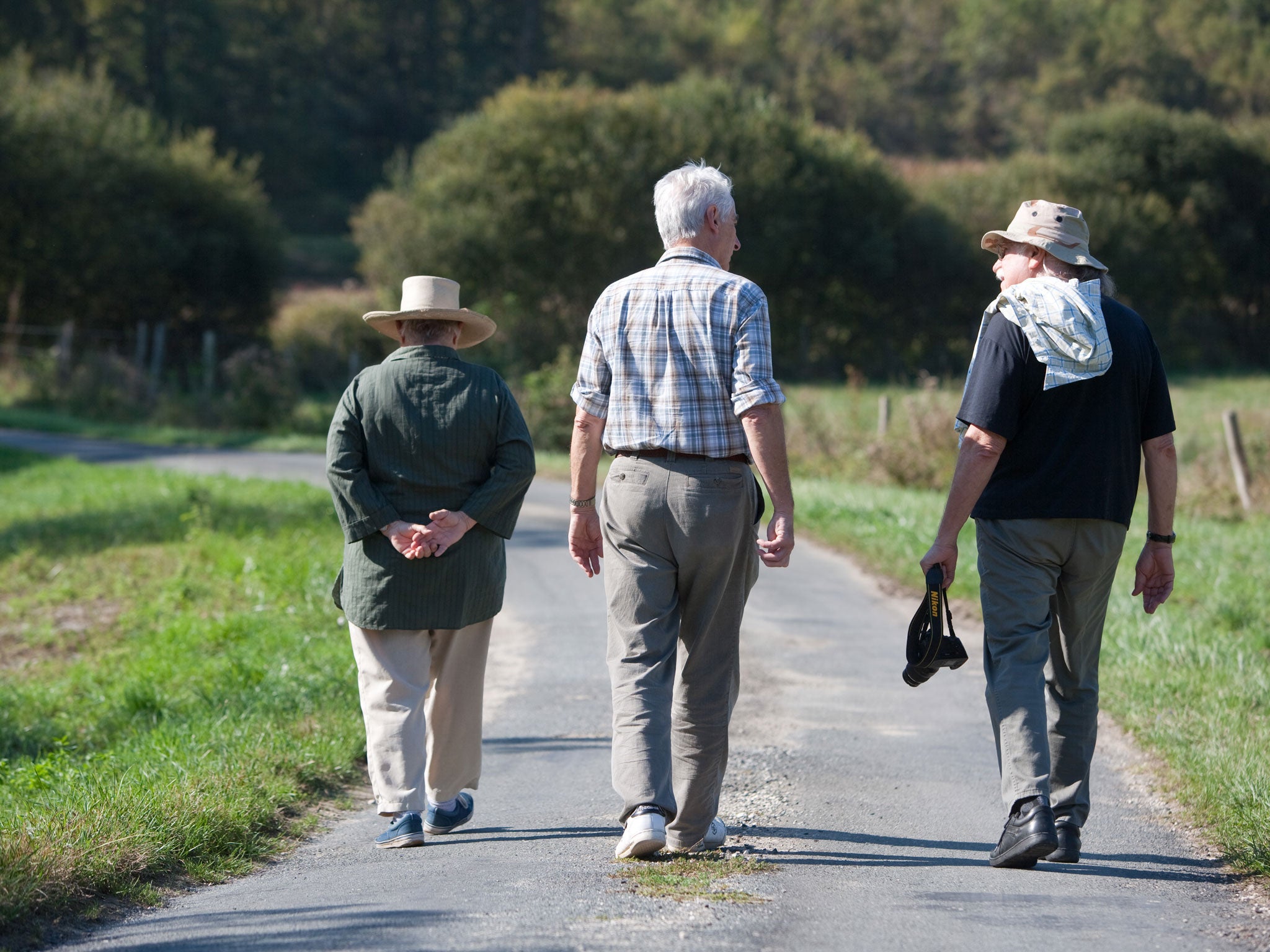Exercise to beat dementia: Regular physical activity 'boosts brain regeneration'
Frequent, moderate physical activity can delay the start of dementia

Moderate but regular exercise can boost the size of the parts of the brain that shrink with age, according to scientists who believe that light physical activity is one of the best ways of preventing senile dementia.
A study involving 120 people aged between 60 and 80 found that walking briskly for 30 to 40 minutes a day three times a week was all that it takes to “re-grow” the structures of the brain linked with cognitive decline in later life.
The effect was equivalent to stopping the ageing clock of the brain by between 1 and 2 years and is one of the first scientifically controlled studies demonstrating the power of physical exercise in delaying the onset of mental decline and boosting brain regeneration, scientists said.
Brain scans taken before and after the year-long study showed that two regions of the brain in particular - the prefrontal cortex and the hippocampus - grew in volume among the group undertaking light aerobic exercise, while they continued to shrink in those who were given only stretching tasks.
The exercise group also did better at cognitive tasks which tested things like memory, language ability and attention, which are known to decline with age, than the second group that did not exercise.
“The results suggest that brain and cognitive function of the older adults remain plastic and highly malleable. There is not this inevitable decline that we used to think there was. We can improve brain function by relatively modest amounts of physical activity,” said Kirk Erickson of the University of Pittsburgh in Pennsylvania.
“Between six months and one year of regular physical activity can actually increase the size of the prefrontal cortex regions and another region of the brain called the hippocampus,” Professor Erickson told the American Association for the Advancement of Science.
“Both of these regions deteriorate and shrink as we get older. The prefrontal cortex is really involved in a lot of higher level cognitive functions and the hippocampus is well known to be involved in memory formation, and when it shrinks it leads to Alzheimer’s disease and dementia,” he said.
“With modest amounts of exercise we are able to increase the size of these structures that typically deteriorate and precede the cognitive complaints that often come in late adulthood
“The hippocampus increased by about 2 per cent over a one year period. That may sound like a modest amount but that’s actually like reversing the age clock by about one to two years,” he added.
There is strong epidemiological evidence linking a sedentary lifestyle to an increased risk of Alzheimer’s disease and dementia, but this latest study was part of a randomised, controlled trial which has a greater power of linking cause and effect, Professor Erickson said.
“We take older adults, bring them in to the laboratory, assess their fitness levels and give them very comprehensive cognitive tests. We show that those adults that remain more active and physically fit tended to do better on a variety of cognitive tests,” he told the meeting.
“In these studies we bring people into the lab who are not very physically active to begin with, and they are at higher risk of cognitive decline. We randomise them into either a control condition or one that receives exercise,” he explained.
“They come in three days a week, and have the same social interaction etc. The main difference is in the type of physical exercise and the intensity of exercise. One group does walking around a track and the other does light stretching, rather than aerobic exercise,” he said.
The scientists do not as yet know what causes the brain areas to increase in volume. It might be increased blood flow or an increase in the number of neurons or other kinds of brain cells.
While there was a 2 per cent average increase in volume within the exercise group, the same brain regions shrunk by about 1.5 per cent in the group who did not take part in the exercise regime, which is the normal rate of shrinking for this age range, Professor Erickson said.
“You don’t need highly vigorous physical activity to see these effects. People are misled into believing they need years of vigorous physical exercise. But it only needs to be moderate and not even for that long,” he said.
“They feel better. They say they feel as if the fog has lifted. We get those types of comments quite a bit, so anecdotally it seems to benefit these cognitive functions,” he said.
“Exercise influences virtually every tissue and organ system of the body. It has a very widespread influence and makes it very difficult to track which makes it difficult to isolate one thing but that’s probably why it’s so difficult to know what’s going on because it hitting so many different molecular systems.
“All the evidence is lining up that this is a very effective non-pharmaceutical approach to treating dementia....If we measured these people for longer period of time we’d probably find that we are slowing the decline rather than completely mitigating it. But it might slow it down for a long period of time. We cannot say it’s the magic bullet cure for Alzheimer’s -- there isn’t one,” he said.
Subscribe to Independent Premium to bookmark this article
Want to bookmark your favourite articles and stories to read or reference later? Start your Independent Premium subscription today.

Join our commenting forum
Join thought-provoking conversations, follow other Independent readers and see their replies